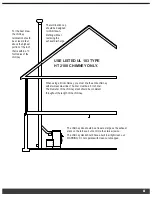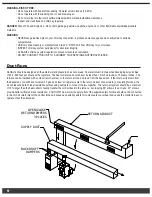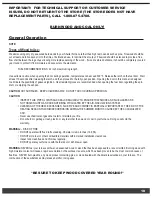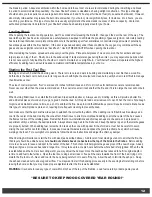
20
7.
Problem: Rapid accumulation of creosote in furnace and flue.
• Use of high resin wood, such as
pine.
• Completely avoid using if at all possible. If hardwoods are not
available, fuel the furnace with smaller loads. This will cause the
draft control to call for more heat more often. Consequently, the fires
will be hotter, thereby reducing the accumulation of creosote.
Possible Causes:
Remedies:
• Under-firing the furnace has
caused low flue gas temperature.
• Install flue gas thermometer and maintain stack temperatures
between 300° and 400° F.
• See #9.
• Insufficient chimney draft.
• Improper connection in stove
pipe causing air leakage or a
structural defect in the chimney
itself.
• Inspect entire flue run, from the exhaust stack of the furnace to the
termination cap. Repair as necessary.
• Fire box not receiving adequate
amount of oxygen.
• Furnace room may be too airtight to supply sufficient amount of
oxygen for combustion. Install an aperture to the outside consisting
of a minimum of 12 square inches or 4 inches round.
• Install stainless steel liner in masonry chimney to reduce creosote
formation and improve draw. Use appropriate size stainless liner for
the furnace.
• DANGER: Never use uninsulated stove pipe as chimney. It must not
be used on the inside of your home due to high stack temperatures,
which create an extreme fire hazard. Uninsulated pipe cannot be
used as an outside flue because it causes rapid cooling of the stack
gases, which causes them to condense as creosote on the inside of
the flue.
• Use of an unlined masonry
chimney with a large clay tile
opening.
• Using uninsulated stove pipe
for the chimney, especially if the
construction is on the exterior of
the home.
Problem: Bugs found in wood.
• Wood has rotted or has been
laying around for an extended
period of time.
• Inspect the wood for obvious signs of insect infestation such as
burrows or holes, avoid using if possible. Do not store wood indoors.
Possible Causes:
Remedies:
8.
Содержание SF2400
Страница 25: ......





































